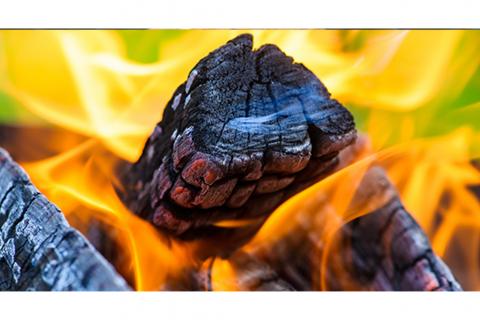
Who does not love sitting by a roaring campfire under a starry sky? Whether it is for a weekend family adventure or a solo camping trip, every camping enthusiast should know these fire-making basics before heading into the woods.
Gather Your Tinder, Kindling and Fuel Wood
A lot more goes into starting a fire than throwing some sticks together and lighting a match. If you want a good fire, start by collecting tinder, kindling and fuel wood.
Tinder
This is the light, dry material that helps get your fire started. Many campers use paper, tree bark, sticks, twigs, dry leaves, pine needles or grass. As long as it is dry, it will work. Collecting tinder in a damp environment will be challenging, so create a waterproof fire kit in the weeks leading up to your trip. Collect material such as junk mail, dryer lint, cotton balls and scrap paper and cloth that can be used as tinder. In a pinch, even your favorite potato chips can be tinder.
Kindling
Once the tinder is ignited, add some slightly larger pieces, or kindling. Twigs, feather (or fuzz) sticks and split wood all make good kindling. Do not add too much kindling too fast, however, or you might smother your fire.
Fuel Wood
After your fire is burning the kindling, add fuel wood. This is what keeps your fire going. Hardwoods like maple and oak burn long and hot, while pine burns faster and with more soot. Use branches, logs and sticks, but do not add any fuel wood larger than the forearm of an adult man. Many novice campers make the mistake of adding large logs to their fires, which can result in uncontrollable flames.
3 Types of Fire Lays
Before starting your fire, pick a safe location in your campsite. Clean the fire site down to the soil and remove all of the burnable material around the site. Always keep a bucket of water nearby to extinguish any out-of-control flames.
There are three classic fire lays campers can use: the teepee, log cabin and lean-to.
Teepee
The most common and easiest to ignite is the teepee fire. This style yields a fast flame and the heat is directed up to a single point, making it useful for boiling water above. However, the teepee style can burn very quickly and collapse. Campers typically build a log cabin fire on top of the teepee style with kindling if it collapses.
1. Put your tinder bundle in the center of your fire site on a piece of dry bark.
2. Stick up to four kindling twigs in the ground to make a teepee around the tinder and lean small kindling pieces downwind of the tinder.
3. Leave an opening to the center of the tinder so you can light the fire. The opening should be upwind.
4. Continue leaning the kindling in a teepee formation and work your way up to larger sticks and twigs, while leaving adequate air space between the sticks.
5. Use three or four sticks to create a larger structure. Poke them into the ground and start leaning in fuel wood pieces.
6. Have fuel wood and extra kindling on hand to keep your fire burning.
Log Cabin
Popular among beginner fire starters, this type of fire produces good coals. Despite its popularity, the log cabin style can be difficult to light, so be sure to leave an open space to access the tinder from the outside.
1. Begin by laying a small teepee fire.
2. Lay two pieces of fuel wood parallel to each other on opposite sides of your teepee. Repeat with two pieces of smaller fuel wood on the opposite sides of the fuel wood.
3. Leave a space on the upwind side so you can access the tinder to light your campfire.
4. Continue to lay shorter, smaller pieces to form a log cabin shape.
5. Until the outside walls catch, feed the internal fire with extra kindling.
Lean-to
Constructed with a medium-sized log that keeps the kindling propped up, gentle wind helps the lean-to get started. Although this fire produces good heat, it may prove difficult to start in very windy environments.
1. Stick a long piece of kindling or a log in the ground at a slight angle. Make sure it is pointing to the wind.
2. Place the tinder bundle under the long piece of kindling.
3. Lean small pieces of kindling on the tinder and lean more against the support log.
4. Continue laying larger kindling against the first layer.
5. For a larger fire, create a second lean-to made with larger sticks over the first lean-to.
Above All, Be Safe
Not all campsites permit campfires. Check with the ranger on duty to find out if you can burn during your trip. Fire restrictions are put into place to protect the forests, so always follow the regulations.
Never leave a fire burning. It is your responsibility to completely extinguish the fire. Allow your fire to burn to ash and pour lots of water over the burning embers. If you do not have access to water, use dirt, but don't just bury the fire, as coals could smolder under the dirt and reignite.
After you have doused the fire with water or dirt, use a shovel to stir the ashes and embers and make sure all the burned materials are cold to the touch of your hand.
Smokey Bear says: If it is too hot to touch, it is too hot to leave!
- 696 views

